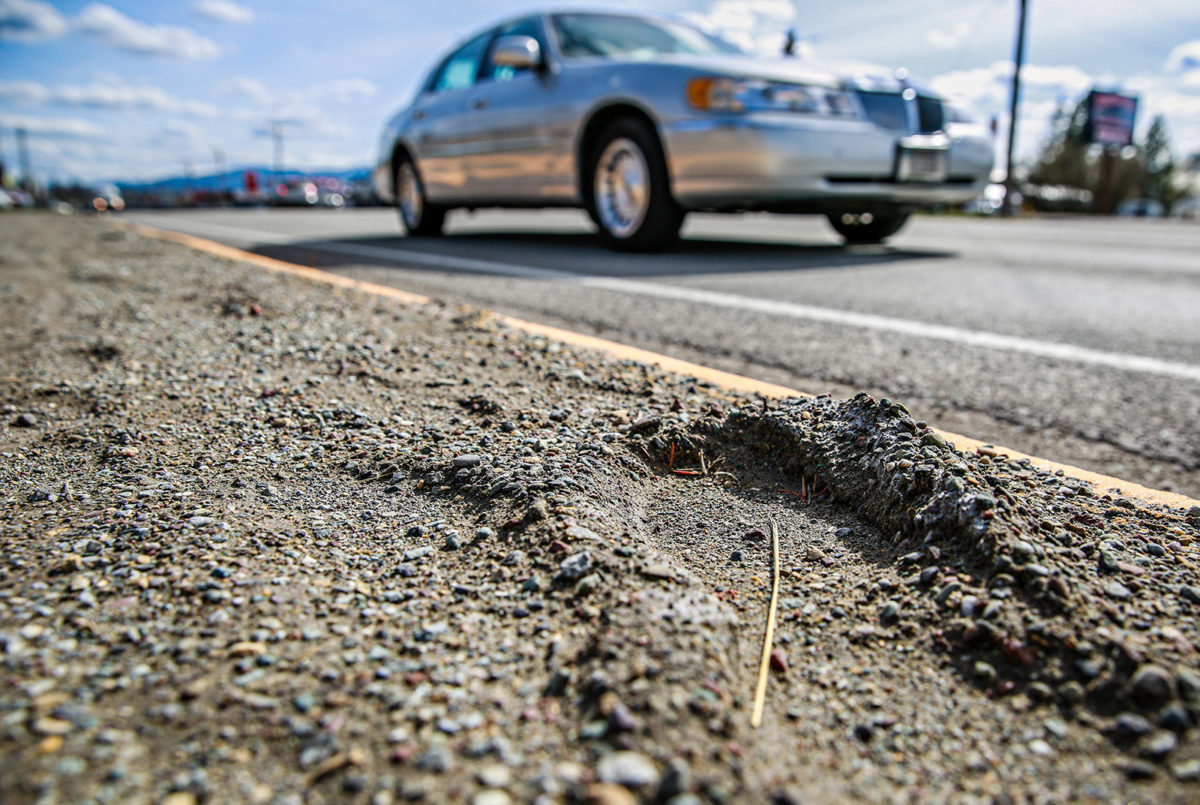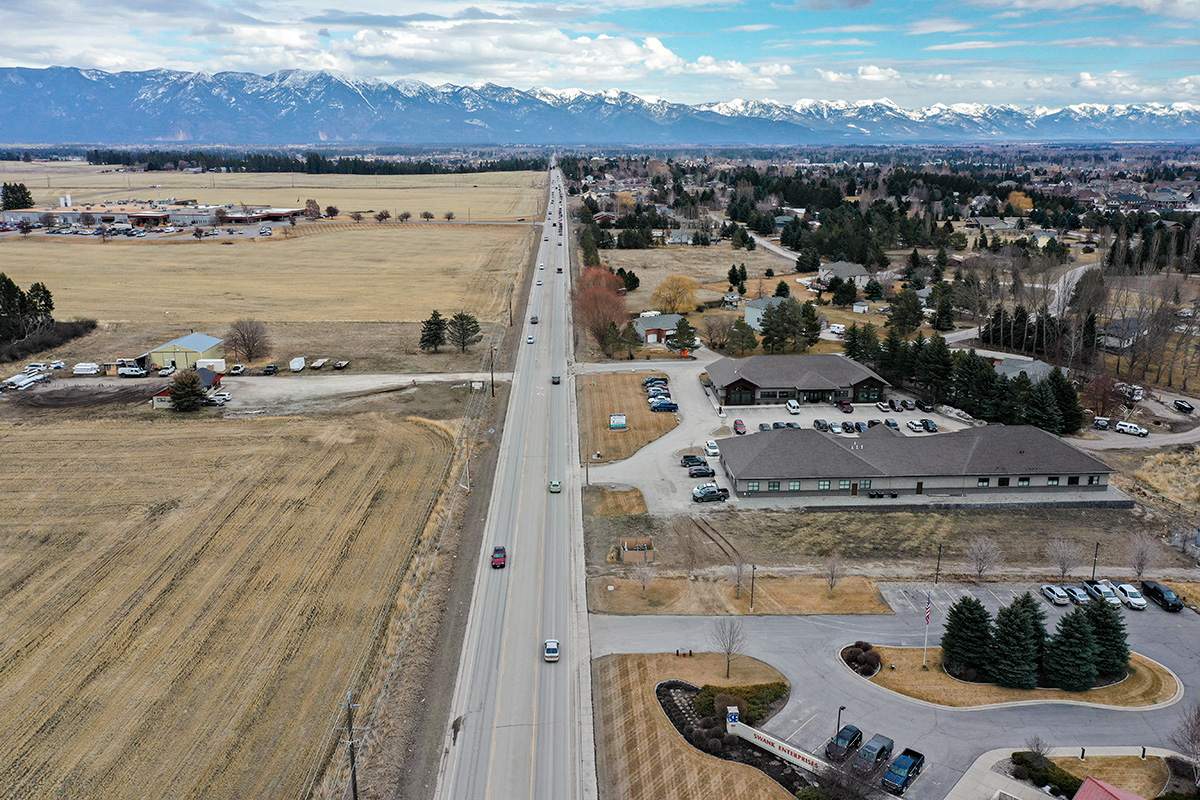Infra
What Did the Bipartisan Infrastructure Law Do for Northwest Montana? – Flathead Beacon
With support from Democrats and Republicans, President Joe Biden’s administration in 2021 secured the passage of the Infrastructure Investment and Jobs Act (IIJA), a historic $1.2 trillion dollar spending package that promised to rebuild America’s crumbling infrastructure. Thus far, the White House says, $480 billion in funding for more than 60,000 projects has been announced. Grants have been allocated to states, tribal governments, territories and local municipalities to undertake needed improvements, from highway expansions to wildfire mitigation. In Montana, the Biden administration says its landmark legislation has delivered $1.7 billion in private sector investment and over 52,000 new jobs.
Montana’s Democratic U.S. Sen. Jon Tester voted in favor of the bill, and was one of 10 negotiators in the Senate who brokered prolonged discussions between Democrats and Republicans over the scope of the legislation.
“Today a large, bipartisan majority of the Senate voted overwhelmingly to pass my historic legislation that will make critical infrastructure investments in Montana and across the country. I worked with Republicans and Democrats to negotiate this package because Montanans have lived off our grandparents’ infrastructure for decades, hurting our ability to grow our economy,” Tester said in a statement after the bill’s passage.
The state’s Republican delegation — Sen. Steve Daines and Rep. Matt Rosendale — voted against the bill.
In northwest Montana, IIJA funds have helped bring to fruition high-need infrastructure projects as the region contends with population growth and increased use of public resources. From broadband internet expansion in Eureka to sidewalk expansions in Columbia Falls, here’s where IIJA money has landed in and around the Flathead Valley.
Glacier Park International Airport Renovation – $19 million
Federal Aviation Administration Airport Terminals Program, U.S. Department of Transportation
Over multiple rounds of grants, Glacier Park International Airport (GPIA) has secured $19 million in funding for a major expansion that has brought new terminals, restaurants, jet bridges and waiting areas to Kalispell’s airport. Construction began in 2021, and the first phase of the $150 million expansion was completed in March. The expansion is set to nearly triple the size of the airport — from 75,000 square feet to 200,000 square feet. Already, travelers can access new restaurants and shops, additional terminals, updated indoor and outdoor waiting areas, and expanded rental car and tourism information areas.
With a boom in tourism to Glacier National Park and the Flathead Valley, GPIA over the past several years has seen an increase in passengers and demand for flights, which has tested the small airport’s infrastructure. The airport reported a 7% increase in arrivals from July 2022 to July 2023, as well as an uptick in shoulder season travel.
“This will be an iconic structure that will represent our community to the hundreds of thousands of people who travel through here each year,” Glacier Park International Airport Director Rob Ratkowski said during a visit with Tester at the airport in 2022. “And importantly, federal funding is a critical piece of this project. Through the FAA and TSA, the federal government is a heavily invested partner.”
High-Speed Internet Connection – $47 million
ReConnect Grants, U.S. Department of Agriculture
Eureka’s InterBel Telephone Cooperative last year received over $12 million to deploy high-speed internet across Lincoln County, which is set to benefit more than 900 rural residents, 36 businesses and 11 farms in Lincoln and Flathead counties. The funding came from the U.S. Department of Agriculture’s ReConnect Loan and Grant Program, which helps rural areas expand broadband service. Thirteen percent of Lincoln County is defined as unserved or underserved by broadband.
Energy Grid Protection Against Wildfires – $26 million
Grid Resilience and Innovation Partnership (GRIP), U.S. Department of Energy
Five electric cooperatives in Montana received a collective $26 million last October to protect energy grids against wildfire. Recipients of the Grid Resilience and Innovation Partnership (GRIP) program funds included Flathead Electric in Kalispell and Lincoln Electric in Eureka. Part of the GRIP grants awarded to Flathead Electric will go to improving energy infrastructure from West Glacier to Essex, including wildfire mitigation, battery backups and vegetation management.
Kootenai National Forest Wildfire Mitigation – $22 million
Wildfire Crisis Strategy, U.S. Forest Service
The United States Department of Agriculture has designated 21 fire-prone landscapes across the western U.S. as initial priorities for implementing a sweeping wildfire crisis strategy. Included in that list is the Kootenai Complex, a 1 million acre landscape that stretches across the Kootenai and Idaho Panhandle national forests. Through the IIJA and Inflation Reduction Act (IRA), the Kootenai Complex Wildfire Crisis Strategy Landscape was awarded around $22 million to reduce hazardous fuels and improve forest health. Fuel reduction efforts have been undertaken on thousands of acres of forest land, as well as the wildland urban interface around the communities of Eureka, Fortine, Trego, Libby, Troy, as well as Moyie Springs, Idaho, and Bonners Ferry, Idaho. These efforts have included prescribed burns, hand and mechanical thinning, piling and mastication, according to the Kootenai National Forest. Federal funding has also enabled National Environmental Policy Act (NEPA) analysis on seven priority projects within the landscape boundary, partnership with the Montana Department of Natural Resources and Conservation to administer a contract for NEPA analysis on a linear fuel break categorical exclusion, and the implementation of new agreements with the Confederated Salish and Kootenai Tribes and the National Forest Foundation.
Columbia Falls RAISE Grant – $10 million
Rebuilding American Infrastructure with Sustainability and Equity (RAISE) Grant, U.S. Department of Transportation
Through a Rebuilding American Infrastructure with Sustainability and Equity (RAISE) grant from the U.S. Department of Transportation, the city of Columbia Falls received more than $10 million for local infrastructure improvements. The Gateway to Glacier Safety and Mobility Improvement Project will reconstruct 1.3 miles of roadway, 1.7 miles of sidewalks and one mile of multi-use pathways throughout the city. It will also improve parking and reconstruct various intersections to comply with the Americans with Disabilities Act (ADA). More specifically, the project will impact three distinct sections of roadway on 13th Street, 4th Avenue and 7th Street West. The city will match the federal grant with $500,000 from its water fund.
U.S. Highway 93 Reconstruction – $31 million
National Significant Federal Lands and Tribal Projects (NSFLTP), Federal Highway Administration
The Confederated Salish and Kootenai Tribes (CSKT) was awarded $31 million to update and rehabilitate U.S. Highway 93 from Dublin Gulch Road to Gunlock Road through the Federal Highway Administration’s (FHWA) National Significant Federal Lands and Tribal Projects (NSFLTP) program. The funding will go towards a multi-span bridge over Ninepipes Reservoir and northbound passing lane over Post Creek, traffic safety implementations, wildlife collision reduction and shared-use path infrastructure and roadway reconstruction. Rich Janssen, department head of natural resources at CSKT, told the Beacon last year that population growth and increased tourism had worn away at the highway, which was in need of major repairs.
Evergreen Pedestrian Improvements – $1 million
Surface Transportation Block Grant, U.S. Department of Transportation
Evergreen received $1 million for the second phase of its Safe Routes To School project, a decades-long effort to construct sidewalks along U.S. Highway 2 near Evergreen Junior High School. Despite being one of the most densely populated school districts in Montana, Evergreen’s small geographic size prevents it from qualifying for busses, forcing many students to walk the treacherous stretch of U.S. Highway 2 to get to school every day. The first phase of the project, which was funded through an allocation in the state budget, added sidewalks on both sides of the highway from the junior high school to the old Kmart. The second phase of the project will be funded by the $1 million Surface Transportation Block Grant, a grant program of the U.S. Department of Transportation that allows states and localities to preserve and improve public roads and highways. With the federal grant, which was allocated through the IIJA, Evergreen will construct sidewalks north of the school, from East Evergreen Drive to Poplar Drive along the east side of Highway 2, and from Meadowlark Drive to Terry Road on its west side.

Stoltze Timber Wood Processing – $1 million
Wood Products Infrastructure Assistance, U.S. Forest Service
Stoltze Timber in Columbia Falls received $1 million through a grant program that seeks to help wood processors improve, establish and expand facilities that purchase and process byproducts from ecosystem restoration projects on federal or tribal lands. The grant, Stoltze Managing Partner of Manufacturing Pat Clark told the Beacon, will help build North America’s first mass timber production facility aimed at using small-diameter trees to build large format, cross-laminated timber panels. Called Stoltze Timber Systems, the concept represents a strategic move to bolster the value of small-diameter timber coming out of Montana forests, which holds little value at the lumberyard, by producing large-format mass timber, or composite wood.
Whitefish Rail Corridor Crossing Study – $400,000
Federal Railroad Administration, U.S. Department of Transportation
The city of Whitefish and BNSF Railway Company in 2023 received $400,000 from the Federal Railroad Administration to study alternatives to at-grade railroad crossings at Birch Point Drive, State Park Road, East Second Street and the Baker Avenue Viaduct. The study hopes to support “safer” and “more efficient” rail movement along Whitefish’s rail lines, which carry BNSF trains as well as Amtrak’s Empire Builder passenger service. With the project, the city hopes to evaluate four railway crossings, improving connectivity while working to eliminate the risk of highway-rail grade crossing accidents.
Four Mile Drive Sidewalk Extension – $796,000
Surface Transportation Block Grant, U.S. Department of Transportation
The city of Kalispell will utilize a Surface Transportation Block Grant from the U.S. Department of Transportation to extend the multi-use pathways along Four Mile Drive near the Kalispell Youth Athletic Complex (Kidsports). The project will construct around 815 linear feet of sidewalk, as well as safety features, to extend existing pathways. A pedestrian crossing will also be constructed near Northland Drive. City officials in their application for the grant said the project will expand safe transportation options for pedestrians and cyclists.

West Reserve Drive Improvements Project – $25 million
Multimodal Project Discretionary Grant, U.S. Department of Transportation
Kalispell is utilizing a $25 million grant from the U.S. Department of Transportation’s Multimodal Project Discretionary program to widen West Reserve Drive from three lanes to five following a major boom in infrastructure use in the city. The project also involves adding a center turn lane and a shared use path to the roadway, as well as constructing sidewalks on the Stillwater River Bridge. The Montana Department of Transportation and the city of Kalispell in July selected Schellinger Construction and DJ&A Engineering to complete the project. Federal funds will be matched by $13.4 million from Montana’s Surface Transportation Program and $1.44 million from the SAFER Montana Roads and Bridges Fund. West Reserve Drive is currently near capacity with an estimated 18,000 to 20,000 vehicles traveling on the west end and 13,000 to 15,000 vehicles on the east end per day, according to a corridor planning study completed in 2021. With the completion of the improvement project, the city hopes to increase roadway safety and pedestrian accessibility.
“It’s a big influx of money coming into our transportation program that’s allowing us to improve safety and the driving experience,” Matt Straub, Missoula District engineering project manager for the Montana Department of Transportation, said.
Flathead County Bridge Investment Program – $240,000
Bridge Investment Program, U.S. Department of Transportation
With a grant from the U.S. Department of Transportation’s Bridge Improvement Project, Flathead County will develop repair and replacement plans for four bridges. The four bridges identified as needing improvements are the Baker Avenue and Delrey Road bridges in Whitefish, as well as the Whitefish Stage Road and Dry Creek bridges in Kalispell. The Flathead County Road and Bridge Department is being assisted by DCI Engineers and WGM Group to perform bridge planning, preliminary engineering and initial environmental reviews.









